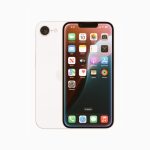When you buy through our links, we may earn money from our affiliate partners. Learn more.
Lisa Eadicicco/Business Insider
- The $280 Apple Watch SE offers the right mix of affordability and features for most people.
- It has the same processor as last year’s Series 5, a large display, and most of the same fitness features as the $400 Series 6.
- But the SE lacks an always-on display, meaning it turns into a black square when idle on your wrist just like Apple’s older smartwatches.
- Visit Business Insider’s homepage for more stories.
Those in the market for a new Apple Watch have usually had two choices until now: Spend $400 to get the newest model, or pay less to get an older version that doesn’t come with Apple’s latest features or technologies.
But in 2020, Apple is finally offering a third option: the $280 Apple Watch SE, which serves as a middle ground between the $400 Apple Watch Series 6 and the $200 Apple Watch Series 3. The Apple Watch SE is a lot like last year’s Series 5, except it lacks the ability to capture an electrocardiogram from the wrist and doesn’t have an always-on display.
Still, it runs on the same processor as last year’s watch and offers a larger display than Apple’s cheapest model, the Series 3.
Unless you’re buying an Apple Watch specifically to keep a closer eye on your heart activity, the Apple Watch SE is likely the best choice for those in the market for a new Apple smartwatch.
The only major feature you’re missing out on by not choosing the pricier Series 6 is its always-on display, which keeps the watch’s screen turned on even as it sits idle on your wrist, preventing it from turning into a useless black square when not in use.
The Series 6 can also read your blood oxygen saturation, but in my experience this alone doesn’t justify purchasing it over the SE.
For iPhone owners, the Apple Watch SE strikes the right balance of new features and affordability compared to the Series 6 and Series 3. Here’s a closer look at what it’s been like to use it.
Apple Watch SE specifications
- Size options: 44 millimeter or 40 millimeter
- Display: 44mm: 368 x 448 pixels, 977 square mm display area; 40mm: 324 x 394 pixels, 759 square mm display area
- Processor: Apple S5 system-in-package
- Health tracking: Optical heart sensor, high and low heart rate notifications, irregular heart rhythm notifications, fall detection, sleep tracking
- Features and sensors: Compass, always-on altimeter, GPS, emergency SOS, international emergency calling, Apple Pay, GymKit
- Battery life: Up to 18 hours
- Durability: Water resistant up to 50 meters
- Storage: 32GB
- Finishes: Aluminum
- Colors: Silver, space gray, gold
Design and display
Lisa Eadicicco/Business Insider
In terms of design, don’t expect any surprises or significant changes with the Apple Watch SE. Apple’s cheaper watch looks almost exactly like the ones that came before it, with some differences in color choice and build materials.
The Apple Watch SE is available in aluminum only with silver, space gray, and gold color options. The Series 6, by comparison, comes in aluminum, titanium, and stainless steel builds as well as more color finishes, including new red and blue variants for the aluminum models, unlike the SE.
The biggest drawback when it comes to the SE’s design is its lack of an always-on display. It’s not a deal breaker, but it’s one of the few features I missed when switching from the Apple Watch Series 6 to the Apple Watch SE. After weeks of being able to quickly glance down at my wrist to see the time or progress toward my fitness goals throughout the day, going back to deliberately twisting my wrist or tapping the watch was certainly an adjustment.
But for most people, this benefit alone isn’t enough to justify spending an additional $120. Before testing the Series 6, I spent months wearing my Apple Watch Series 3 and barely thought about this omission.
Still, with cheaper watches like the $230 Fitbit Versa 3 offering an always-on display, it would be nice to see this feature trickle down to Apple’s less expensive offerings, too.
Health tracking
Lisa Eadicicco/Business Insider
If you’re considering purchasing an Apple Watch, chances are you’re probably interested in keeping tabs on your health and activity.
The Apple Watch SE has just about everything you could want from a general purpose fitness tracker, from step counting to workout tracking, guided breathing exercises, heart rate monitoring, and reminders to move. It can also detect if you’ve taken a hard fall and alert emergency services and designated contacts if needed — another feature that separates it from the cheaper Series 3.
What you won’t get with the SE, however, is blood oxygen measurements and electrocardiogram readings. The former is the biggest new feature Apple introduced to the Series 6 this year. It uses lights and sensors on the back of the watch to determine how much oxygen is in your blood.
I wouldn’t recommend paying extra just for the blood oxygen reader, however, mostly because the benefits you get from it aren’t very clear. It’s not intended for medical use, and it also isn’t apparent how these readings factor into your overall wellness.
The Series 6’s ECG app, on the other hand, has been approved by the Food and Drug Administration and can check for signs of atrial fibrillation. Those who need to keep a close eye on their cardiac activity for signs of irregular heart rhythms should consider the Series 6, but otherwise you’ll get a very similar health tracking experience by choosing the cheaper Apple Watch SE.
When it comes to activity and fitness tracking, the Apple Watch hits pretty much every mark. The only area in which it’s noticeably lacking compared to rival devices is sleep tracking. Apple finally added sleep tracking to compatible Apple Watch models with its watchOS 7 software update, but its capabilities are fairly limited compared to those found on Fitbit and other competitors.
The Apple Watch can track your average time spent asleep and time spent in bed, and Apple also offers digital tools on the iPhone to help you wind down before it’s time to hit the sack. You can also view a summary of your heart rate data during sleep in the Health app’s heart section. But other devices like smartwatches made by Fitbit have a lot more to offer when it comes to monitoring the quality of your sleep, as they can tell how much time you’ve spent in light, deep, and REM slumber.
Software
Lisa Eadicicco/Business Insider
The Apple Watch SE is compatible with watchOS 7, Apple’s latest software update, meaning it supports new features like the ability to share customized watch faces with others, manage a family member’s Apple Watch, process dictated requests on-device, and automatically start a timer when it detects that you’re washing your hands.
The software update is available for the Apple Watch Series 3 and higher, but the Series 3 doesn’t support handwashing detection or on-device dictation processing because of its older chip.
The Apple Watch SE and Apple Watch Series 6 offer pretty much the same software experience, so you’ll be able to use the same features regardless of which watch you purchase.
The Apple Watch’s interface is one area in which it excels over Fitbit. It’s generally more polished than Fitbit’s, with image-rich notifications, app icons that look a bit more refined than Fitbit’s, and visual accents like the way the app icons move when toggling the digital crown. My only complaint about the look and feel of Apple’s software is that it can sometimes be difficult to find a specific app in the sea of bubble-shaped icons on the watch’s app screen.
Battery life
Lisa Eadicicco/Business Insider
The Apple Watch SE’s battery life is similar to that of the Apple Watch Series 6 and its predecessors. That’s to say you’ll be able to get through about a day and a half without charging it, which is fine if you don’t intend to use it for sleep tracking and instead plan to charge it every night.
Fitbit’s smartwatches, however, offer multi-day battery life, making them more convenient for sleep monitoring. The Apple Watch SE also doesn’t charge as fast as the Series 6, so you’ll have to carve out more time to set it on its charger during the day if you plan to wear it to sleep.
The bottom line
Lisa Eadicicco/Business Insider
Overall, the Apple Watch SE is the right blend of value and new features for most people. It’s a shame that it doesn’t have an always-on display like the Series 6 or Series 5, but that characteristic alone likely isn’t enough to justify spending an extra $120 on the Series 6. The blood oxygen meter on the Series 6 also doesn’t seem useful enough in its current state to make the Series 6 a strong recommendation over the SE.
The Apple Watch SE is the right middle ground between the $400 Series 6 and the aging Series 3, which can’t support certain features in watchOS 7, has a smaller screen, and is missing features like fall detection. If you’re an iPhone owner looking for a solid, general-purpose smartwatch and fitness tracker, the Apple Watch SE is the best choice. Go with the Series 6 if you’re willing to pay extra for an always-on display and more customization options, or if you need the extra heart health monitoring features it offers.
Pros: Affordable price; Robust health and fitness tracking features; Large display
Cons: No always-on display; Limited sleep tracking; Battery life lacks compared to rivals
Powered by WPeMatico






